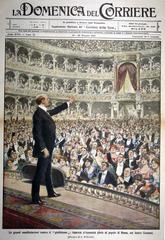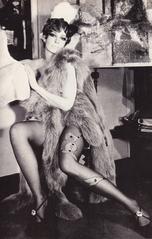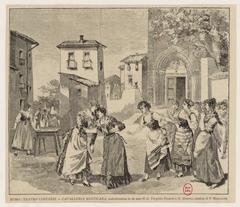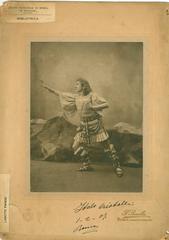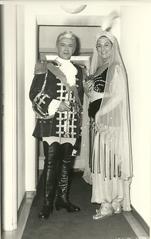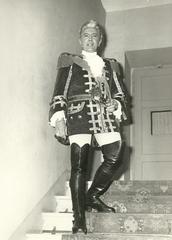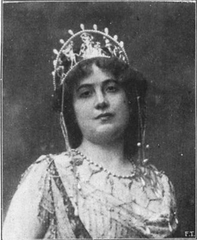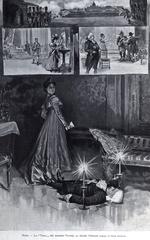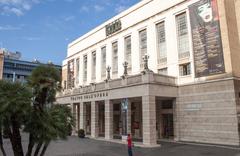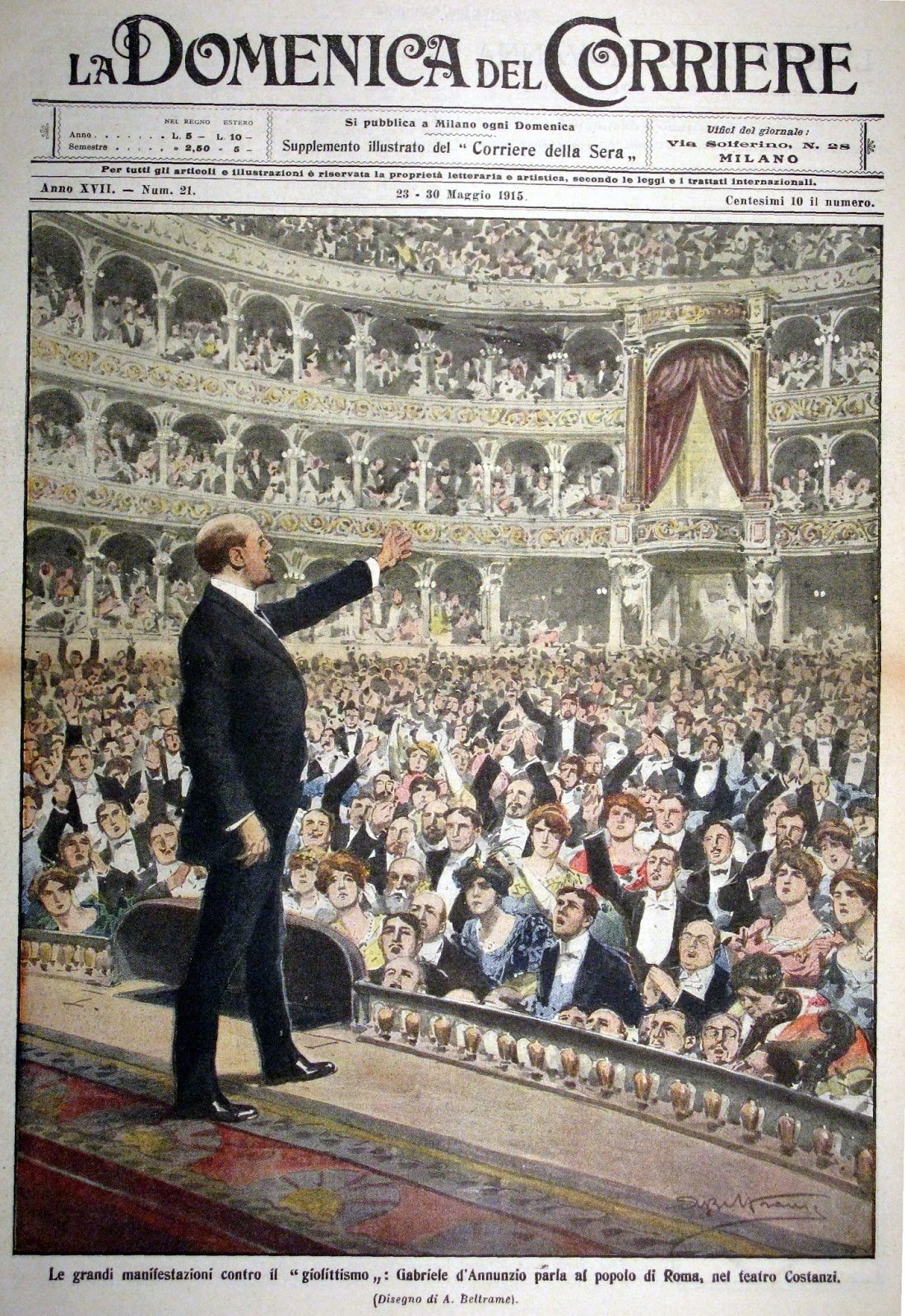
Teatro dell’Opera di Roma: Complete 2025 Visiting Guide
Date: 14/06/2025
Introduction
The Teatro dell’Opera di Roma stands as one of Rome’s most iconic cultural landmarks, offering an immersive journey into Italian opera, architecture, and history. Whether you are an opera aficionado, a lover of architectural splendor, or a curious traveler, this guide provides all the essential information—covering history, visiting hours, ticket options, guided tours, accessibility, nearby attractions, and practical tips—to ensure your experience at Rome’s celebrated opera house is both memorable and enriching.
Table of Contents
- Historical Overview
- Architectural Evolution and Interior Highlights
- Acoustics and Performance Experience
- Visiting Information
- Annual Programming Overview (2025)
- Caracalla Festival: Summer Open-Air Events
- Guided Tours and Visitor Experience
- Atmosphere, Dress Code, and Etiquette
- Nearby Attractions
- FAQs
- Summary and Visitor Tips
- References
Historical Overview
Origins and Early Years (1879–1907)
Originally inaugurated as the Teatro Costanzi in 1880, the theatre was commissioned by entrepreneur Domenico Costanzi and designed by Achille Sfondrini, a Milanese architect renowned for his expertise in theatre acoustics. Sfondrini’s horseshoe-shaped auditorium, frescoed dome by Annibale Brugnoli, and tiered seating created a space lauded for both its beauty and acoustic excellence. Despite financial hardships, the theatre quickly gained artistic renown, hosting world premieres such as Pietro Mascagni’s Cavalleria rusticana (1890) and Giacomo Puccini’s Tosca (1900), with the latter’s narrative deeply intertwined with the city’s landscape (Google Arts & Culture; Wikiwand).
Management Transitions and Artistic Flourishing (1907–1926)
The early 20th century saw the theatre under the stewardship of impresario Walter Mocchi and, later, his wife Emma Carelli. Their leadership ushered in a period of artistic innovation, introducing Italian audiences to works such as Wagner’s Parsifal and staging performances by Diaghilev’s Ballets Russes. These years solidified the theatre’s status as a hub of international and avant-garde opera and ballet (Wikiwand).
Municipal Acquisition and Renovations (1926–1946)
Purchased by the Rome City Council in 1926, the opera house underwent significant renovations under architect Marcello Piacentini. The main entrance was relocated to Piazza Beniamino Gigli, a fourth tier was added, and the interiors were enhanced with new stuccowork and a striking Murano glass chandelier. The theatre, renamed Teatro Reale dell’Opera, reopened in 1928 with Arrigo Boito’s Nerone (Wikiwand; Google Arts & Culture).
Modernization and Present Day (1946–Present)
Following the proclamation of the Italian Republic in 1946, the theatre assumed its current identity as Teatro dell’Opera di Roma. Subsequent renovations in the 1950s and 1960s, again led by Piacentini, modernized public spaces and reduced seating for improved comfort, while meticulously preserving the legendary acoustics and historic artistry. The theatre remains a premier venue for world-class performances and a symbol of Rome’s cultural vitality (Wikiwand).
Architectural Evolution and Interior Highlights
Teatro dell’Opera di Roma seamlessly blends neo-Renaissance grandeur with modern enhancements. The horseshoe-shaped auditorium, an acoustic masterpiece, is adorned with plush red velvet, gilded stucco, and Brugnoli’s frescoes. The monumental Murano glass chandelier, added during 20th-century renovations, serves as a luminous centerpiece. The foyer, marble-floored and colonnaded, is an elegant gathering space, while the Royal Box and upper galleries provide panoramic views of the stage. Guided tours often include access to the theatre’s museum, which houses historic costumes, set designs, and memorabilia (Turismo Roma; Opera Roma).
Acoustics and Performance Experience
Designed from the outset for optimal sound, the theatre’s architecture ensures rich, balanced acoustics throughout the auditorium. Performers and audiences alike praise the clarity and resonance, making every performance—opera, ballet, or symphonic concert—a truly immersive experience (Rome Tourist).
Visiting Information
Hours, Tickets, and Tours
- Box Office: Monday–Saturday, 10:00 AM–6:00 PM; Sunday, 9:00 AM–1:30 PM
- Guided Tours: Tuesday–Friday at 10:30 AM and 3:30 PM; Saturday–Sunday at 10:30 AM and 11:30 AM
- Tour Prices: €15 (adults), €8 (children under 14), €10 (Rome residents); exclusive tours with aperitivo or live performance available on request
- Performance Tickets: Purchase online at the official website, at the box office, or via authorized platforms (Ticketone)
Accessibility
The theatre is wheelchair accessible and offers step-free access to most areas except the Royal Box and Gallery. Accessible restrooms, elevators, and assistance for visitors with reduced mobility are available—advance notice is recommended for tailored support (Agenda Online).
Travel Tips
Located at Piazza Beniamino Gigli, 3, the theatre is a short walk from Termini train station and the Repubblica Metro (Line A). Parking discounts are available at nearby garages, and public transport options abound (RomaPerTe). Arriving early allows time to enjoy the theatre’s architecture and foyer ambiance.
Annual Programming Overview (2025)
The 2024–2025 and 2025–2026 seasons feature a diverse repertoire:
- Opera: Lucrezia Borgia (Donizetti), Alcina (Handel), Suor Angelica / Il Prigioniero (Puccini/Dallapiccola), Tosca (Puccini), Il re pastore (Mozart), L’Italiana in Algeri (Rossini)
- Ballet/Dance: Onegin (Cranko), contemporary works, and guest performances such as “Roberto Bolle & Friends”
- Symphonic/Chamber Concerts: With renowned conductors including Michele Mariotti and James Conlon
- Special Events: Educational programs, family shows, and commemorations like Holocaust Remembrance (Opera di Roma; Cultural Italy)
Caracalla Festival: Summer Open-Air Events
From late June to early August, the Caracalla Festival transforms the ancient Baths of Caracalla into a spectacular open-air stage, blending Rome’s archaeological grandeur with unforgettable performances. The 2025 festival, themed “Tra Sacro e Umano,” features operas (La Traviata, Don Giovanni), ballets (Le Sacre du Printemps / Bolero), musicals (West Side Story), and sacred music, alongside appearances by international stars (Wanted in Rome).
Guided Tours and Visitor Experience
Guided tours (in Italian, English, and Japanese) explore the auditorium, foyer, Royal Box, gallery, and museum. Knowledgeable guides share the theatre’s storied history, architectural marvels, and behind-the-scenes anecdotes, offering a deeper appreciation of its artistic legacy (Opera Roma).
Atmosphere, Dress Code, and Etiquette
- Atmosphere: The theatre’s blend of opulent interiors, historic artwork, and acoustic brilliance creates an atmosphere both majestic and welcoming.
- Dress Code: While not strictly enforced, smart attire (cocktail or business casual) is recommended, especially for evening performances.
- Etiquette: Arrive early to enjoy the foyer and review program notes. Intermissions are ideal for socializing and taking in the theatre’s ambiance (Rome On Foot).
Nearby Attractions
Teatro dell’Opera di Roma’s central location makes it easy to combine your visit with other cultural and historical sites:
- Basilica di Santa Maria Maggiore
- Baths of Caracalla (Caracalla Festival venue)
- Palazzo del Quirinale
- Via Nazionale shopping district
Charming cafes and restaurants nearby offer opportunities for pre- or post-show dining (Rome Tourist).
FAQs
What are the theatre’s visiting hours?
Box office: Mon–Sat 10:00 AM–6:00 PM, Sun 9:00 AM–1:30 PM. Guided tour and performance times vary; check the official schedule.
How do I buy tickets?
Purchase online, at the box office, or via authorized ticket vendors. Early booking is advised, especially for major events.
Is the theatre accessible?
Yes; most main areas are accessible, and assistance is available upon request. Contact the box office for specific needs.
Are guided tours available?
Yes; tours can be booked online or at the box office and are offered in multiple languages.
What should I wear?
Smart casual attire is recommended, especially for evening events.
Can I take photographs?
Photography is generally permitted during tours but not during performances. Always confirm with staff.
Summary and Visitor Tips
Teatro dell’Opera di Roma is not only a historic building but a living testament to Italian artistic excellence. With a celebrated history, architectural grandeur, world-class performances, and a central location, it is a must-visit for anyone exploring Rome’s cultural legacy. Plan and book your visit in advance, consider a guided tour for deeper insights, and stay informed about special events such as the Caracalla Festival for a truly unforgettable experience.
Stay up to date by regularly visiting the official Teatro dell’Opera di Roma website, and consider using the Audiala app for audio guides and event recommendations to enhance your visit.
References
- Wikiwand: Teatro dell’Opera di Roma
- Barceló Guide: Teatro dell’Opera di Roma
- Opera di Roma: 2025 Season & Events
- Cultural Italy: Rome Opera Theater Events
- Turismo Roma: Teatro dell’Opera di Roma
- Opera Roma: Guided Tours
- Wanted in Rome: Caracalla Summer Festival
- Google Arts & Culture: Teatro dell’Opera di Roma
- Romeing: Opera Season
- Rome Tourist: Opera in Rome
- Rome On Foot: Experiencing Opera in Rome
- Agenda Online: Teatro dell’Opera di Roma Program
- RomaPerTe: Teatro Opera Roma
